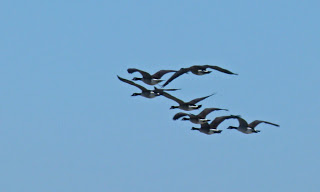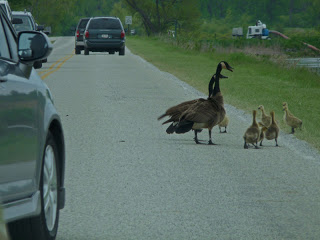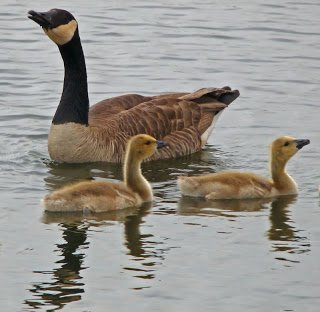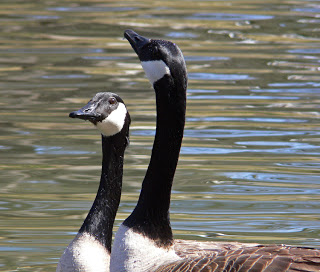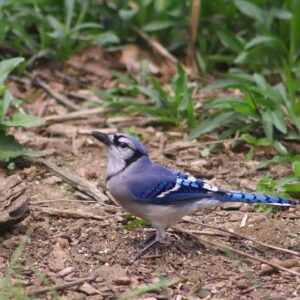Have you noticed V’s of geese lately? Are they migrating through Kentucky on their way somewhere else? Maybe, and maybe not. Canada Geese fly in a V formation because it’s both aerodynamic and energy efficient. Each bird in the line flies slightly higher than the bird in front of it, acting as a windbreaker and reducing drag. The lineup provides easy communication between the geese while keeping track of each other. They take turns leading the formation, falling back in the line when they become tired.
Canada Geese maintain nests in Canada and in the northern regions of the United States throughout the summer. Once lakes and rivers begin to freeze over and food becomes scarce, the geese congregate into flocks of 30 to 100 birds to start their migration to warmer places. The fall migration occurs in September or October. They travel the same flight corridors called flyways every fall and spring to get to their destinations in southern parts of the United States and northern Mexico. The flyways follow coastlines, rivers and mountain ranges. Canada Geese migrate 2,000 miles to 3,000 miles, and can fly 1,500 miles in 24 hours with ideal weather conditions! The geese generally travel 40 miles per hour, but they can reach 70 mph with a good wind. The geese fly at altitudes between 2,000 feet and 9,000 feet.
Though common today, at one time Canada Geese were hunted almost to extinction. The birds had vanished from the north-central United States by 1900, and droughts in the 1930s reduced their numbers elsewhere. Since then, however, the growth of federal and state refuge systems has helped build goose populations that now probably exceed those of presettlement times. The present abundance of Canada Geese in open suburban areas like parks, airports and golf courses, and their habit of defecating almost a pound of material per goose per day, has given the bird an increasingly negative image.
People may be surprised to hear that birds learn to migrate from their parents and flock—they don’t hatch with this complex knowledge. So geese hatched in Kentucky never learned to fly north and instead took up local residence year-round. We’ve provided food and safety right here in our cities and suburbs. The geese have no reason to go elsewhere, so they settle in and raise families.
Canada Geese are found in many types of watery habitat, including lakes, rivers, marshes, bogs and sloughs. In their breeding range, a pair usually requires at least five acres of open water plus access to upland fields or open land for grazing. In winter, geese need grazing habitat for feeding and open water for drinking. Geese are vegetarians, eating a variety of plant species and parts, especially grasses, sedges, grain and berries. They often feed in flocks, and have become fond of farm-grown grains, especially corn and shoots of winter wheat. These birds are exceedingly adaptable to human-altered habitats and are common on suburban parks, lawns, golf courses and even at Cave Hill Cemetery. So don’t be surprised to see them near your own neighborhoods.

